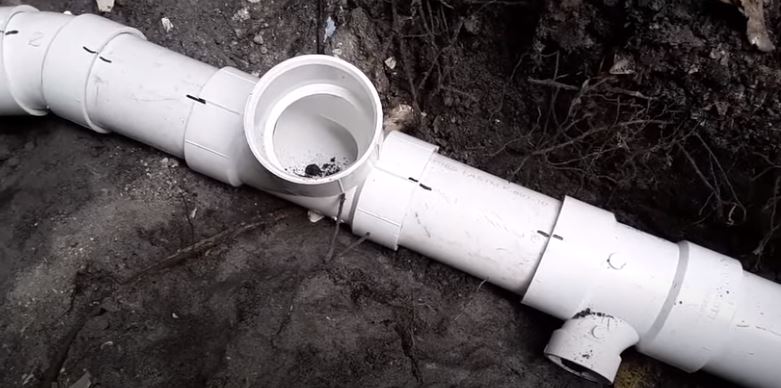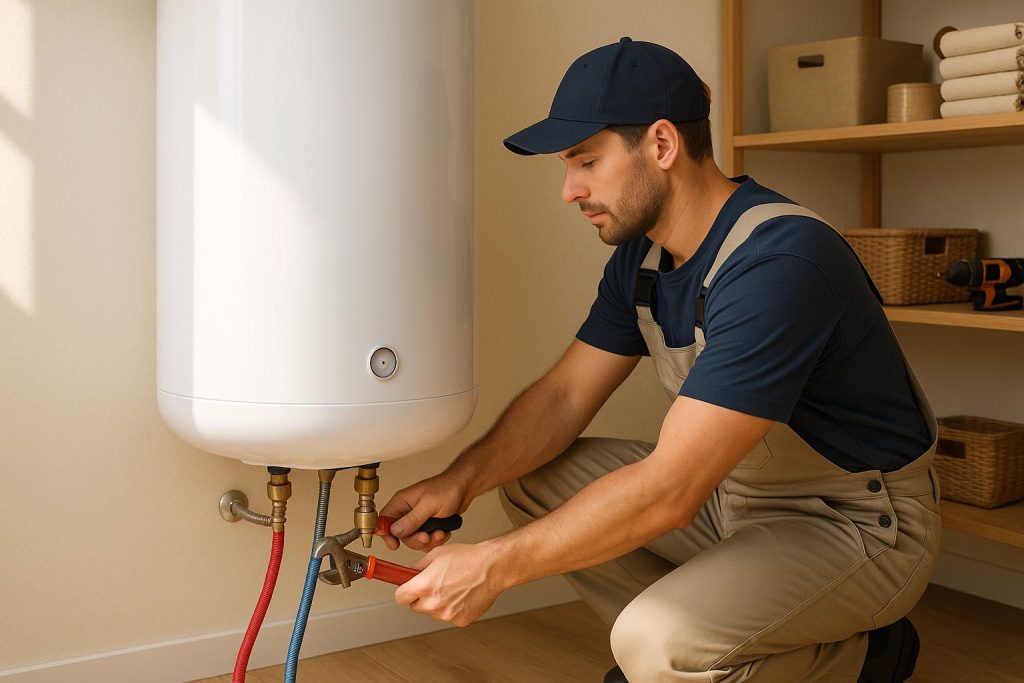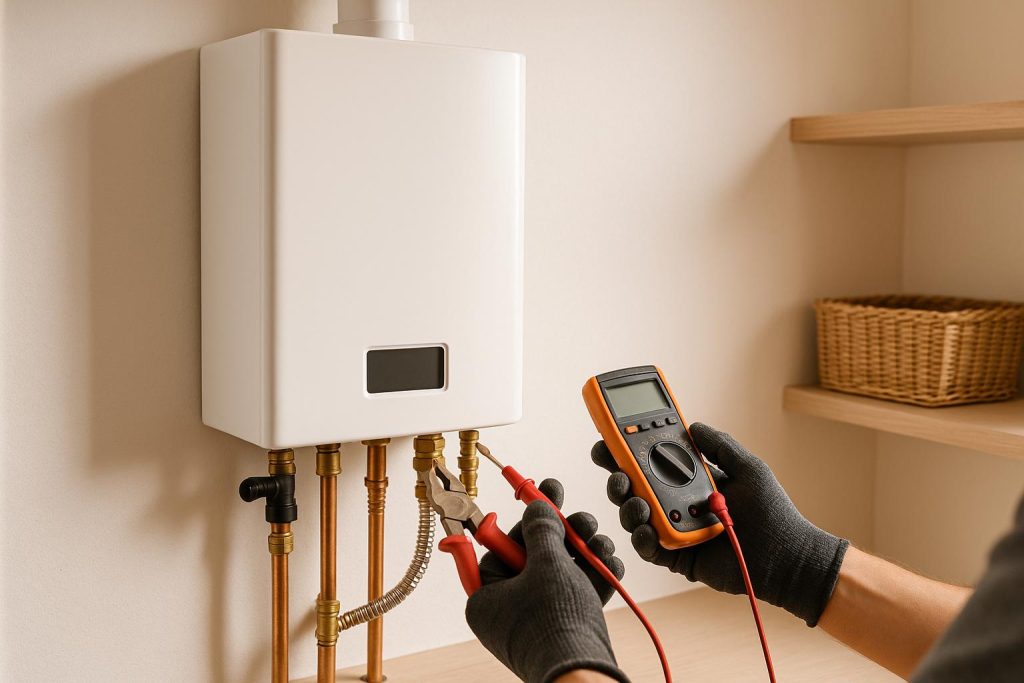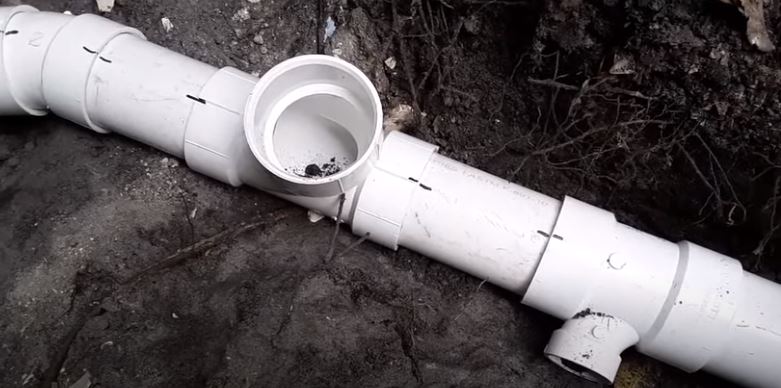
Locating the sewer line on your property is essential for maintenance and avoiding costly repairs. Here’s a brief summary of proven methods to find the sewer line:
- Blueprints and Records: Start by checking your property’s original blueprints or municipal records, which may indicate the location of the sewer line.
- Utility Markings: Contact your local utility company or 811 (USA) to have them mark underground utilities, including the sewer line. This service is usually free and helps prevent accidental damage during excavation.
- Follow the Drainage: Identify the path of the sewer line by tracing the drainage pipes from your home’s plumbing fixtures, like toilets and sinks, to the point where they exit your building.
- Visual Inspection: Conduct a visual inspection of your property, looking for any manhole covers, cleanouts, or access points, as these are often positioned above or near the sewer line.
- Probe or Metal Detector: Use a long probe or a metal detector to locate the sewer line by detecting buried pipes made of metal or plastic. This method requires patience and precision.
- Sewer Scope Inspection: Hire a professional plumber or sewer inspection service to perform a sewer scope inspection, which involves inserting a camera into your plumbing to trace the path of the sewer line.
- Septic Tank Location: If you have a septic system, the sewer line often leads to the septic tank. Locate the tank, and you’ll find the sewer line nearby.
- Consult a Professional: When in doubt or if other methods prove challenging, consult with a licensed plumber or utility locating service with specialized equipment to accurately pinpoint the sewer line’s location.
- Neighboring Properties: If your property shares a common sewer line with neighboring properties, inquire with neighbors who may have already located it.
- Records from Previous Owners: If you’ve purchased the property, contact the previous owners or consult any documentation they might have about the sewer line’s location.
5 Ways to Find the Sewer Line in Your Property

The following are some of the ways you can use to find your sewer line:
1. Find where the Main Drain Line Exits the House
It helps to understand how your house’s drain-waste-vent system is designed. I will try to briefly explain that to you.
You house has several fixtures (toilets, tubs, sinks, showers) which all have separate drain lines. These drain lines are then connected to the main drain line, also known as drain stack.
The main drain line is a vertical pipe of about 4 inches in diameter which is connected to both the sewer line and the plumbing vent. A plumbing vent is the pipe which is connected to the main drain line at the top and runs through the roof of the house.
Its functions are to remove sewer gases from the system and also introduce air into the drains for efficient draining. When the vent is clogged, fixtures drain slowly, gurgle and the toilets have a weak flush.
The sewer line is connected to the main drain line at the very bottom. While the main drain line is a vertical pipe, the sewer line is a horizontal line which slopes downs towards the street sewer lines or septic tank.
If you can find out where the main drain line exits the house you can surely locate the sewer line. This will be in the basement or crawlspace.
With a finished basement, it is not always possible to see the actual pipe. The location of the drains (toilets, sinks, showers) will however help you know where the pipe exits the building.
Another trick you can use is find the position of the plumbing vent (from outside the house). Since the vent is connected directly to the main drain line, its position will help you know where the line most likely exits the house from.
2. Locate the Sewer Cleanout
This is actually the easiest way to find a sewer line. A sewer cleanout is a section of pipe connected directly to the sewer line that helps you gain access to the sewer line.
If your sewer line is clogged or you just need to have it checked, the sewer cleanout is what you use to gain entry. Most sewer lines have a cleanout but few especially in old houses may not have one.
A sewer cleanout may be located inside or outside the house. If yours is located inside the house, it will be on the lowest level of the house, which will be the basement.
Look for a small section of pipe which forms a ‘T’ or ‘Y’ with the main drain line with a cap at the top. That is the cleanout. In some basements the cleanout is located on the floor so check there as well.
Some people don’t like how these important plumbing pieces look so they opt to conceal them inside closets or use just about anything to hide them. You therefore might need to thoroughly search for yours.
Outside your house, your sewer cleanout will be located very close to the house. Look for a 4-inch pipe sticking a few inches from the ground usually with square nut at the top of the cap.
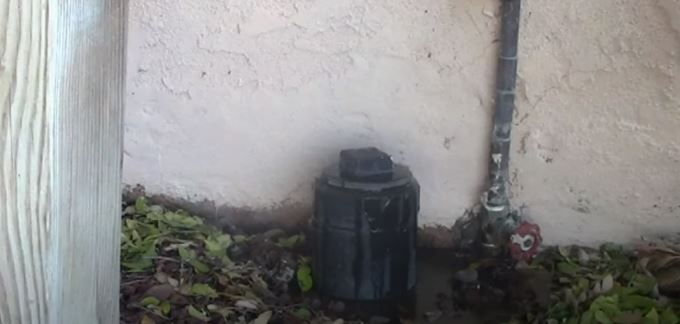
Again, some people also don’t like how these cleanouts look and they tend to hind them so be sure to check underneath flower bushes (if any). They could also be fully covered in mulch.
When you find the sewer cleanout, you have found the sewer line. You will only need to dig.
Please note that some properties have 2 sewer cleanouts which form a ‘U’ with the sewer line. One is used to gain access to the sewer line while the other one is used to gain access back to the house via the main drain line.
3. Call Your City Water and Sewer Department
Your local city is responsible for the sewer lines running across the street while you as the homeowner are responsible for the sewer line in your property.
As such, the city water and sewer department knows where every household is connected to their lines. They also have a map of your underground utilities.
All you need to do is pick up the phone and give them a call. Alternatively, you can decide to physically visit their offices. All they will require from you is your physical address.
Another thing you can do really quickly is check if there is an interactive underground utility map in your area on the internet. Most areas do but some small towns and cities may not.
4. Call the Previous Homeowner
If you still have the contacts of the previous homeowner, you can simply pick up the phone and ask them if they know the location of the sewer line. Chances are high that at one point or another they had to work on the sewer line and will most likely know the sewer line’s location.
Another thing you can do is to check the documents in the home inspections report that you received while buying the house. Go to the plumbing section and you will most likely find a plumbing schematic of you property including the sewer line.
5. Other Methods
A pipe locator fed through one of the drains can be used to locate a sewer line, but that is limited to metal (cast-iron) sewer lines. If your sewer line is made of clay or PVC then this method is not going to work.
One thing you can try to do is talk to your neighbors, if you houses were built around the same time and have the same design. If they know where their sewer lines are, chances are high that yours is in the same location in your property as theirs.
If everything else fails, you can hire a plumber to locate the sewer line for you. This will however cost as much as $300 which is something you want to avoid unless there is nothing else you can do.


